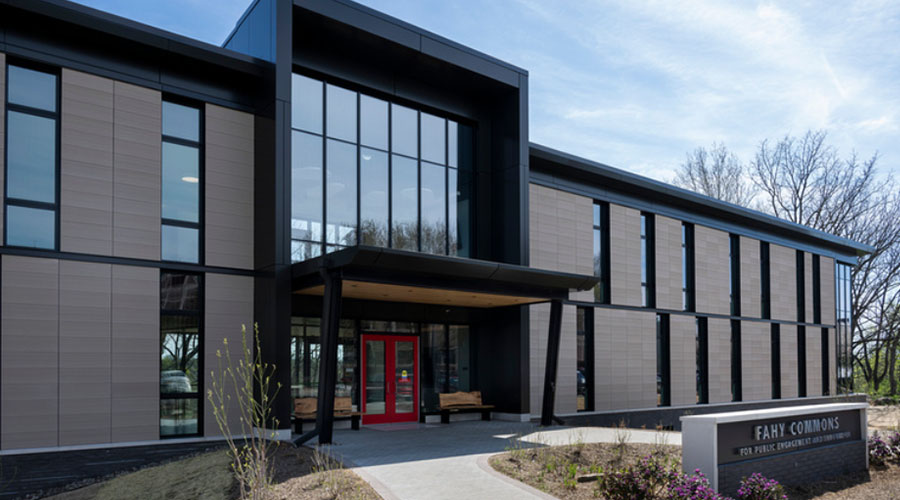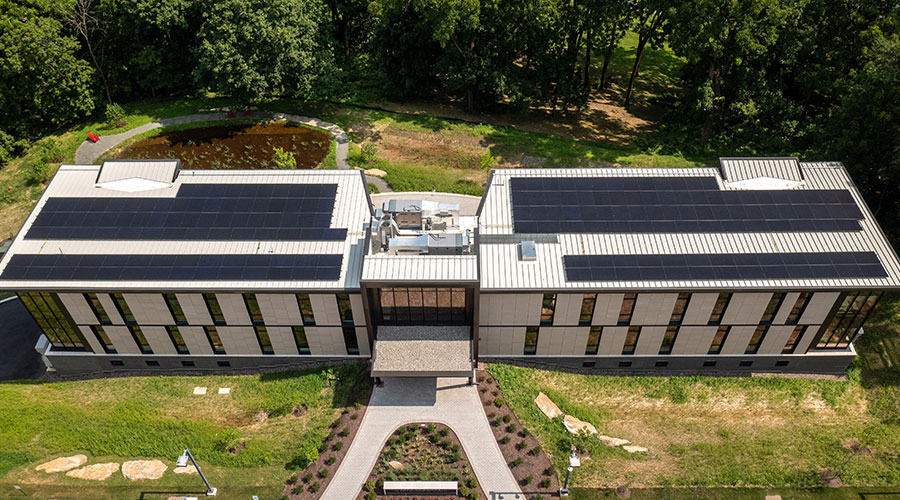Timely Roofing Solutions
How long an owner plans to keep a building influences product selection and maintenance decisions.
Matching a roof to the needs of a specific building requires a great deal of attention to the physical needs of the building — its construction, codes, insurance requirements and climate, to name a few. The reality, however, is that one consideration usually drives the selection of a replacement roofing system: how long the owner intends to keep the building. That investment horizon determines how much the owner is willing to spend on a new roof.
Typical holding times for buildings are five years, 10 to 15 years, or more than 20 years. The latter category includes facilities that are intended never to be turned over to a new owner; they are expected to last until the building either becomes obsolete for its intended use or wears out and is replaced. The choice of roofing system should be matched to the length of time the owner is willing to hold the property.
Short and Sweet
A short-term owner is generally most interested in the initial cost of roof replacement. Condominium developers, for example, will be turning the building over to the condominium owners as soon as the units are sold, so they often show no interest in long-term performance. Owners with investment plans that forecast sale of the building within five years of purchase also have little financial incentive to select a long-term roof.
So what types of roof systems work best for this timeframe? Generally, the least expensive option is to coat the existing roof with a liquid-applied roof membrane. Roof coatings come in many different formulations, including acrylics, urethanes and EPDM, but not all roof coatings are intended to be roof membranes that protect the roof and keep it watertight. Some coatings are formulated only to improve aesthetics or increase reflectivity. Adding one of these coatings to the roof may extend the life of a roof in good condition but will not significantly improve its watertightness.
Liquid-applied roof membranes can give the owner a minimum of an additional five years of roof service life and some coatings will add as much as 20. This service life, however, is dependent upon stability of the existing roof. In general, the warranty for a liquid-applied membrane applies only to the applied coating, not to failures caused by the substrate. If the existing roof is extremely wet, deteriorated, blistered or splitting, a roof coating may not be the best solution, even for a short-term holding, and the warranty may not apply.
Another option for a short-term owner is a mechanically attached or ballasted single-ply membrane. Thinner membranes will be less expensive but will be less durable. Although this route is more expensive than a roof coating, the single ply can be installed as a re-cover, saving the cost of tear off, if the existing roof is less than 25 percent wet. Thinner single plies may offer 10- to 12-year warranties, making them attractive if they are transferable to a new owner. However, it is important to specify membrane thickness that is compatible with the installation method chosen.
The short-term owner might also consider a minimal modified-bitumen installation. At a minimum, a fiberglass base sheet and modified bitumen cap sheet are installed. These systems will also typically offer 10- to 12-year warranties. There are configurations of attachment and installation methods suitable for almost any deck type. Properly designed, these systems can be a good choice for a re-cover.
Another good option for a re-cover is a coated polyurethane foam system. In these systems, a spray-applied polyurethane foam is covered with a protective surface, usually a liquid-applied coating. Because the systems are lightweight, they can be used to re-cover roofs when the structural system cannot hold added weight. The system also adds insulation and can be used to add slope to the roof.
Happy Medium
The majority of building owners hold their properties for 10 to 15 years. For those owners, roofing options increase dramatically. At a minimum, there are the inexpensive single plies mentioned earlier. There are also two-ply modified-bitumen systems that, unlike the fiberglass base ply and modified cap sheet system, may offer warranties as long as 20 years. Re-covers are still an option as warranties generally can be obtained for 10 years. Almost any of the re-cover options used for short-term ownership are suitable for the medium term, although some modifications, such as additional plies, thicker membranes or additional coating, may be necessary.
Multiple-ply built-up roofing systems are another good option. Built-up systems and hybrid built-up/modified bitumen systems offer a combination of affordability and durability. The longevity of modified bitumen systems and built-up roofs is dependent upon the deck type, the use of insulation, the number of plies and the composition of those plies. These can all be revised in the roof design to meet the optimum package of affordability and durability.
Another good option for a re-cover is a coated polyurethane foam system. Polyurethane foam generally has a 10-year warranty but, with maintenance and inspection programs, manufacturers will sometimes do a 10-plus-5 agreement, where the roof is recoated after 10 years and the warranty is extended another five years.
If service life is expected to be more than 10 years, the quality of the roof system should be upgraded. This can be done by increasing the number of plies and upgrading the surfacing in a built-up roofing system or installing a thicker, fully adhered single-ply membrane.
The Long Haul
Owners that expect to hold the building for more than 20 years include universities, hospitals and other institutions, and family-owned real estate where the buildings pass from generation to generation. For this type of ownership, first cost is important, but life-cycle costs and the longevity and durability of the membrane become critical considerations.
Only short-term warranties are available for re-covers — an indication they are not a good option for a long-term owner. To assure a long-term roof service life, the old roof has to come off.
Long-term warranties are available for a range of roofing systems. For example, if the number of plies is upgraded in a built-up roof, and a superior contractor is used, the warranties can run as long as 25 years. Good single ply membranes, including some EPDM systems, can provide 30-year warranties.
Another long-term option is a standing seam metal roof. These roofs can be warranted for up to 30 years and the metal panels can even exceed that length of time. Care should be taken in specifying and designing metal roofs to avoid the use of sealants as waterproofing, especially around flashings. Sealants as primary waterproofing rarely approach the same service life as the metal panels themselves. This applies both to in-seam and exterior applied materials.
First cost of metal roofs is generally higher than for membrane systems, but a life-cycle cost analysis can show that metal systems will be more cost-effective for long-term owners.
Fit for Life
The effects of maintenance on the roof should not be underestimated, and that’s not true only for long-term owners. In fact, for a short-term owner, the most cost-effective option is not reroofing but rather a relatively inexpensive maintenance program. By providing regular inspections and timely repairs, an owner can extend the life of the roof, if its condition is not too bad, past the end of the holding period, saving the cost of a replacement.
For a medium-term owner, not only does a maintenance program defer the time of reroofing, it can provide an opportunity for a renewal of the manufacturer’s warranty on the roof. If the warranty is transferable, this can be a selling point for the building.
Maintaining the roof is like visiting the dentist twice a year for checkups. No one likes to do it, no one likes to spend the money or time, but filling a cavity is a whole lot cheaper than having a root canal. Roofs never get better on their own.
Not surprisingly, the long-term owner reaps the greatest benefits from good maintenance. Having a maintenance program in place can actually save 100 percent of the cost of reroofing over the long term. A roof will generally last only 50 percent of its design life if it is not maintained. If upper management is reluctant to spend money on roof maintenance, a good argument can be that budgeting approximately 2 percent of the roof cost every year to maintain the roof can result in a 50 percent return on investment.
A consideration for both medium- and long-term owners is that a roofing warranty is void if the roof is not maintained. Some manufacturers even provide for an extension of the warranty if a formal maintenance program is in place.
Setting up the maintenance program is not a difficult task. The very first thing to do is have an initial assessment done of the existing roof condition, including both a visual survey and a formal moisture survey. The initial visual survey should be done by someone knowledgeable about roofing, such as a roof consulting architect or engineer, who has no stake in the outcome of the assessment. This provides an unbiased opinion of the state of the roof and what level of maintenance is required. The repairs noted in the survey report should be completed on a timely basis so that the maintenance program begins with a watertight roof.
Maintenance Options
Once the roof has been restored to a watertight condition, a determination can then be made as to the level and type of maintenance program to be implemented.
The least expensive, in terms of outside costs, is to have the consultant train the maintenance staff in what to look for on the roof and have the staff check it any time they go up there. Problems found can be rectified by a trusted roofing contractor on a time-and materials-basis. This informal program works best with newer roof installations where repairs should be few and far between. The problem with this system is that there are no checks to see if the work is being done correctly or that everything that needs to be done is being accomplished. The informal checks may not comply with a roofing manufacturer’s idea of maintaining a roof. This becomes a factor if there is a warranty claim.
Another option is to hire a roof consulting architect or engineer to provide inspections twice a year and to develop a list of items to be corrected along with professional opinions of the costs to do the work. The latter can be used to develop budgets for repairs for the next year. The list of items can then be used to solicit prices from roofers for repairs. This program will generally fulfill the manufacturer’s warranty requirements for roof maintenance provided there is follow up after repairs are completed and the findings documented. Keeping a file of the inspection reports and repairs made will convince any manufacturer that the maintenance is being done.
A third option is a program instituted by the roofing contractor for yearly maintenance programs. These will assure that the roofs are inspected and repaired and usually will give fixed costs for each year, escalating as the roof ages. Manufacturers also approve of these types of programs, as long as the inspections and work results are well documented. Fixed-fee programs make budgeting easier. The drawback is that the owner may be paying a fixed fee for work that is not required.
The important point is not which system is used, but rather that the program is instituted and kept in place. A good maintenance program will help short-, medium- and long-term owners get the most from their roofs and the best investment for themselves.
Karen Warseck is president of Building Diagnostics Associates, a Hollywood Fla., architecture firm that specializes in roofing and exterior wall consulting. She is a contributing editor to Building Operating Management.
Related Topics:











